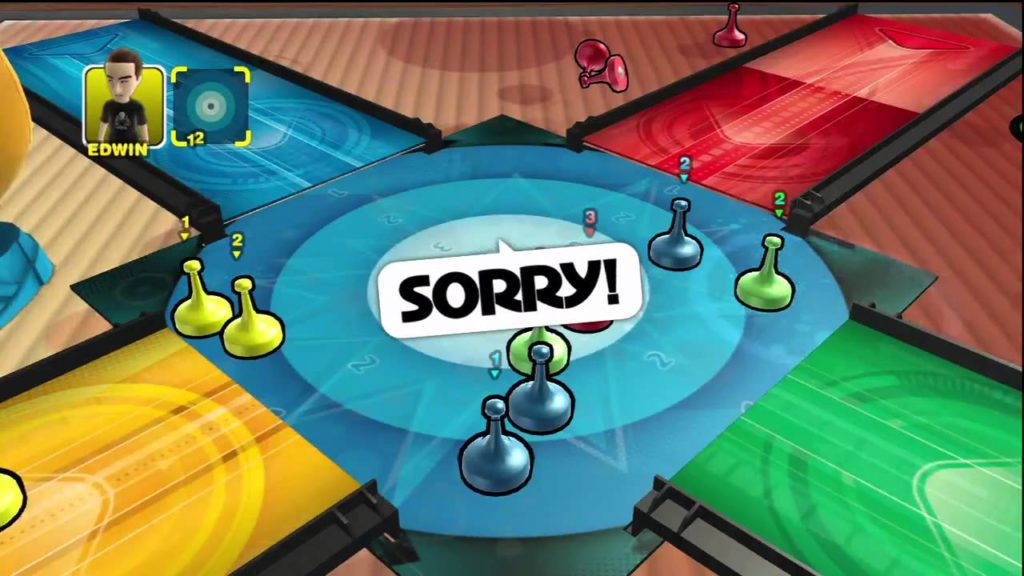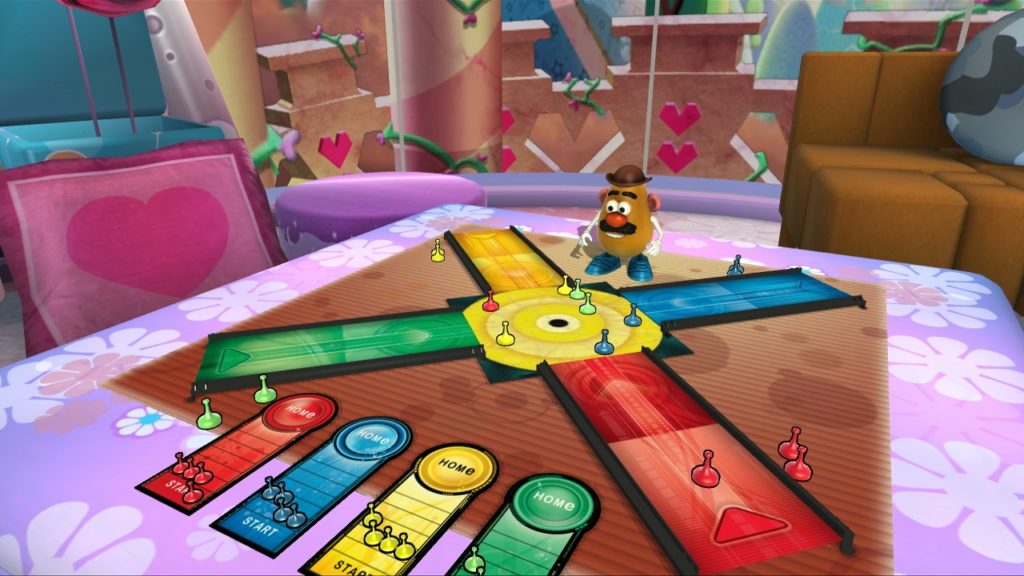Sorry Sliders tasks players with slamming (by sliding) their little token things into other little token things in an attempt to score points based on the position their sliders end up in at the end of a round. Each round gives the player four slider tokens to slide down their arm of a giant “plus” or cross symbol into a joint target area in the middle. Taking turns, players slide their shots, either trying for points or trying to eliminate other players by knocking them out of the target area, until no one has any sliders left.
Once the round is finished, players move their scoring token a number of places based on the points they earned with the sliding tokens in the round. To win, players must get all four scoring tokens to the “home” area at the top of the score card. Much like darts, players will need to get exactly seven points per scoring slider in order to get them home. If you get too many points in a round, you may not be able to move your sliders at all – which is where all of the strategy in how the scoring round is played comes in.

This game, then, is the XBLA version of Sorry Sliders. It’s an unlockable / DLC component of EA / Hasbro’s meta game called “Family Game Night”. This meta game is merely a shell which players download and then purchase (by DLC unlock) any of the games they want to play – at 800 points a go. With a total of six games available, that’s something like $75NZD, making this the most expensive XBLA game available.
Graphically the title is very polished. Its simple presentation matches (exactly) the other games in the Game Night package, with extremely attractive user interface, colourful board / pieces and a very friendly look which shouldn’t offend any parent on earth. It’s also very easy to get into a game and moves (particularly AI moves, which you simply watch take place) are hammered through very quickly, resulting in no frustration as you wait for your turn to come around again.

There are several game modes, including one that spins the central scoring area and another which adds collectable power-ups – each of which significantly spice up the experience. You can also customize which rules apply to your game, electing to disable the downside of having your piece knocked off the board for example.
The game plays very well and should provide a lot of entertainment for young and old. Games are over pretty quickly and we found ourselves hammering the “play again” button as frequently as it came up, opting for “just one more go” more times than we could count. The variations really do change how the game plays and the challenging AI plays a pretty good game, if you’ve got no friends to play with or aren’t online. 800 points seems pretty steep for such a tiny amount of content but then again, what is there is a heck of a lot of fun to play. You’ll need to make your own mind up as to what value that represents.